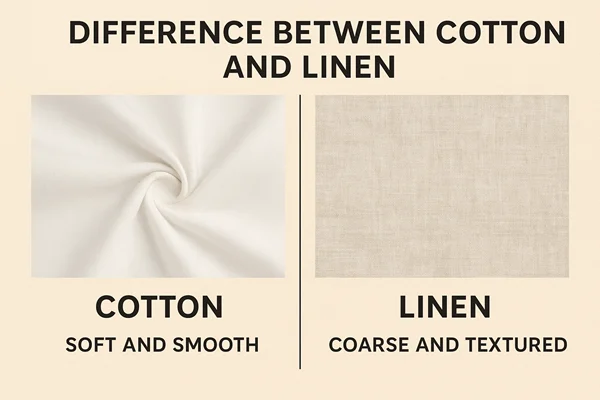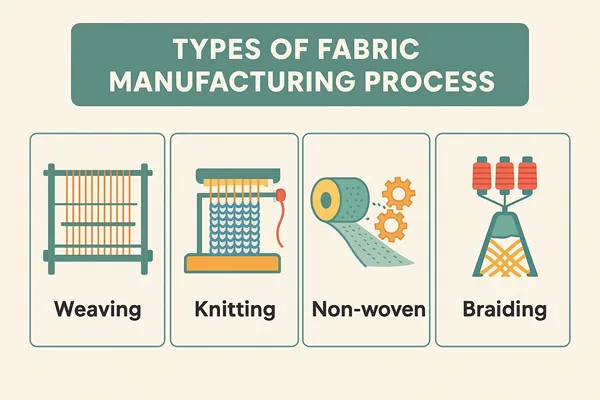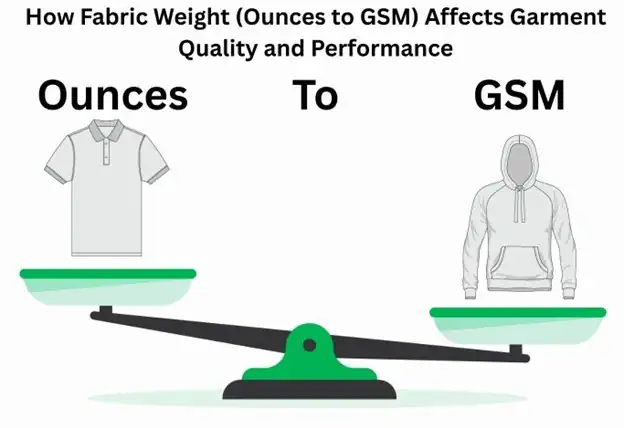Difference Between Cotton and Linen: Cotton vs Linen
It is not an easy task to differntiate between two prominents Fiber and later Fabric choices. Both of them come from two different types of fiber and both are the natural fiber. In this article we are discussing details on Difference Between Cotton and Linen: Cotton vs Linen.
What Is Cotton?
All types of Cotton are natural cellulosic fiber that grows as soft, fluffy bolls around the seeds of the cotton plant (Gossypium). The fibers are spun into yarns and woven or knitted into an enormous variety of fabrics: jersey for T‑shirts, denim for jeans, terry for towels, percale and sateen for sheets, and much more.
What Is Linen?
Linen is also a natural cellulosic fiber, but it comes from the stalk of the flax plant (Linum usitatissimum). The long, strong fibers are extracted from the stem, spun into yarn, and woven into fabric.

Difference Between Cotton and Linen: Cotton vs Linen
If you’re choosing fabric for clothing, bedding, Fashion, or home textiles and keep asking “Cotton or linen?”, this Difference Between Cotton and Linen will help you decide quickly and confidently:
| Topic | Linen | Cotton |
| Derives from | Flax plant | Cotton plant |
| Strength | 30% stronger than cotton | Less strong than linen |
| Thickness | Thicker | Less thick |
| Absorbency | It can absorb up to 20% of its weight in moisture | It can absorb up to 25% of its weight in moisture |
| Hypoallergenic | Hypoallergenic, for people with allergy it will be a better option as it has loose structure, less amount of dust will trap on it | Hypoallergenic |
| Tendency to wrinkle | Wrinkles easily | Comparatively less tendency to wrinkle |
| Tendency to pilling | Less pilling tendency | Easily tends to pill |
| Fineness | Coarser than cotton | Finer than linen |
| Temperature regulating property | Having this property, keeps the bedding cool and comfortable | Cotton also provides some coolness to extreme heat |
| Thread count | lower thread count is necessary to guarantee high quality | can be woven into higher thread count fabrics for an incredibly soft and silky feel |
| Moth resistance & Anti-microbial property | Moth resistant & has anti-microbial property | Not moth resistant & no anti-microbial property |
| Appearance | Provides a luxurious, relaxed and inviting look | Comfortable look |
| Handfeel | As flax fiber is rougher so cotton is softer but with several wash softness increases & lasts longer | Softer and silky but can lose the soft touch with time |
| Breathability | Great breathability, as it is being a hollow fiber, air and moisture can easily circulate | Extremely breathable but depends on the fabric weave |
| Warmth | Hollow fiber makes it cool in summer | Can’t conduct heat, used for home insulating purpose |
| Shrinkage | Less | More |
| Durability | Very durable | Durable |
| Eco-friendliness | Eco-friendly | Not eco-friendly, cotton harvesting process involves harmful chemicals |
| Texture | Rough & textured surface | Smooth surface |
| Sustainability | More sustainable option | Sustainable too |
The selection of a single team is not permanent. A lot of people are happily switching between cotton as their daily comfortable fabric and linen as their summer fabric, special garments, or even bedding that is a bit luxurious. After understanding how each fabric acts, the question of “cotton vs linen” turns from a puzzling one into a straightforward and sure decision depending on your weather, way of life, and fashion sense.
So, what do you think of choosing between these two? Looking for comfortable bedding? Concentrate on the above differences & make your own decision whether you should go for Cotton or Linen bedding…….



